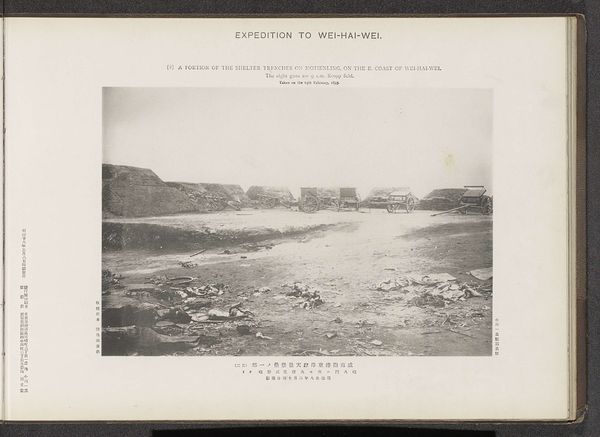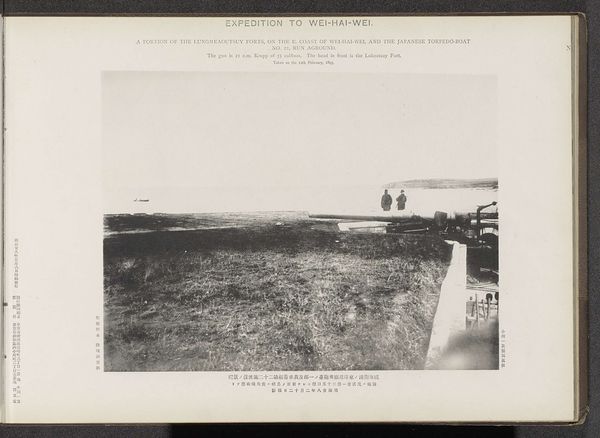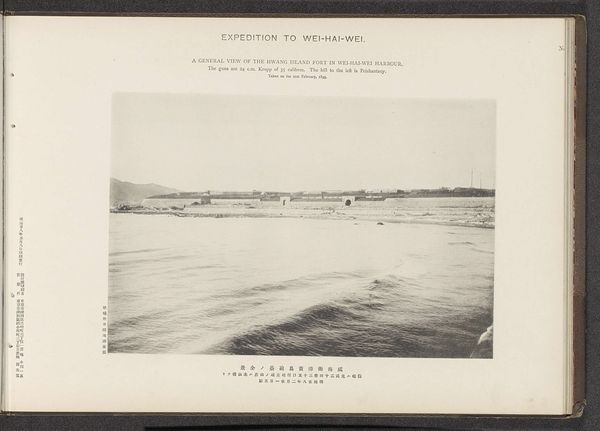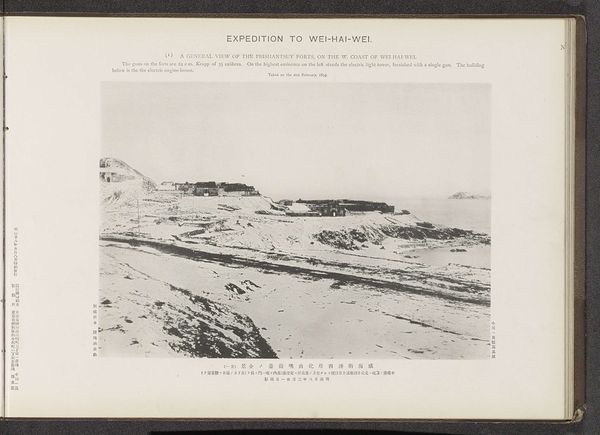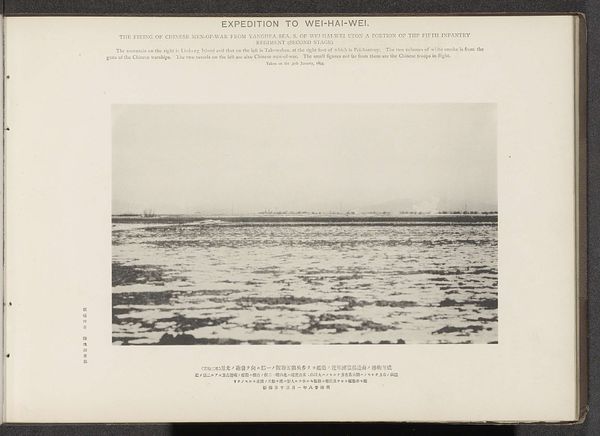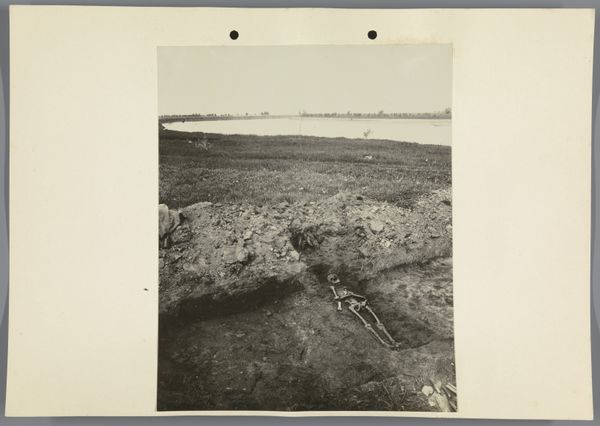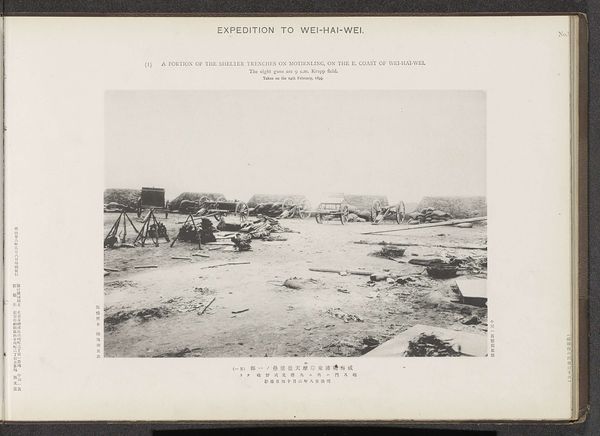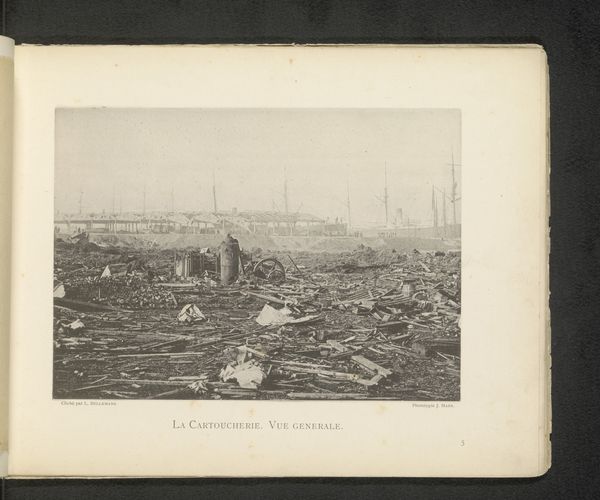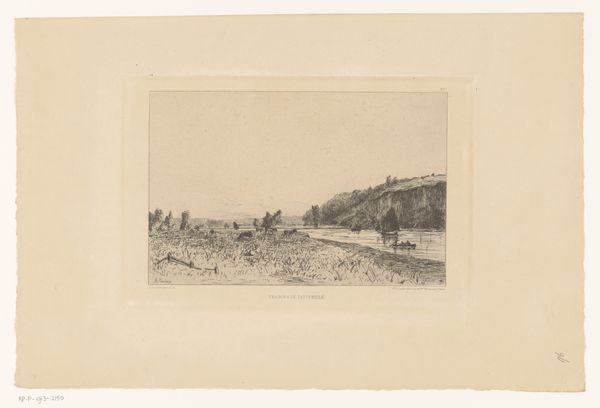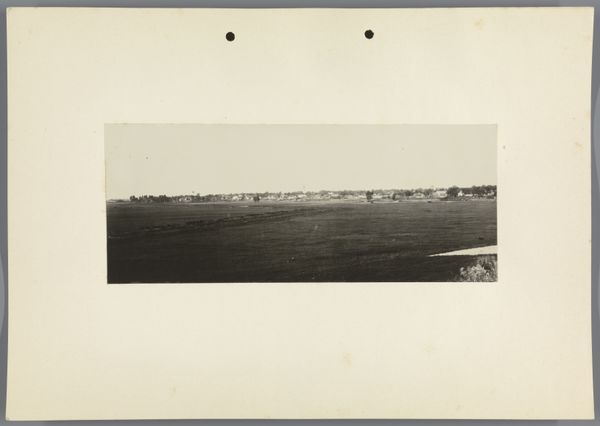
print, photography
# print
#
landscape
#
photography
#
realism
Dimensions: height 198 mm, width 289 mm
Copyright: Rijks Museum: Open Domain
Curator: This image, titled "The Chaopeitsuy forts on the E. coast of Wei-Hai-Wei", is believed to originate from 1895. It comes to us through the Ordnance Survey Office, employing photographic print technology. Editor: It certainly evokes a feeling of desolation, doesn't it? The rubble-strewn foreground contrasts sharply with the stark horizon. There's a palpable sense of destruction and abandonment hanging in the air. Curator: Indeed. Photographs like these serve not just as records, but as political instruments. Images documenting the damage to fortifications highlight power dynamics, narrating both technological advancement and strategic shifts within a given sociopolitical context. Editor: You're right. Consider the context of the Sino-Japanese War. This image wasn't merely documenting a scene, it was participating in constructing a visual narrative around conflict and the shifting control of territory. Note the figures on the forts – perhaps the new occupants? Their presence marks a very visible transformation. Curator: Precisely. These images reinforced European or Japanese authority while visually diminishing Chinese strength, influencing public opinion on a grand scale. The damage is meant to speak, the disarray symbolizing a break in the continuity of place and cultural memory. Editor: It is unsettling how 'objective' documentation can simultaneously become a tool for shaping perceptions and justifying geopolitical strategies. Looking at the way the image has been cropped, or framed even, one can feel its narrative pressure and understand it as a construction that bolsters very clear political aims. Curator: We should be mindful how visual narratives are manufactured and circulated through this type of photograph, embedding themselves in popular comprehension of historical events. They act as conduits, mediating history through carefully chosen iconography. Editor: So the image stands as both evidence and ideological projection. We begin seeing the complex interplay between political agendas and artistic endeavors within visual communication. Curator: That's its enduring significance. It enables us to unearth hidden stratifications of political power etched deeply into ordinary-seeming visuals.
Comments
No comments
Be the first to comment and join the conversation on the ultimate creative platform.
